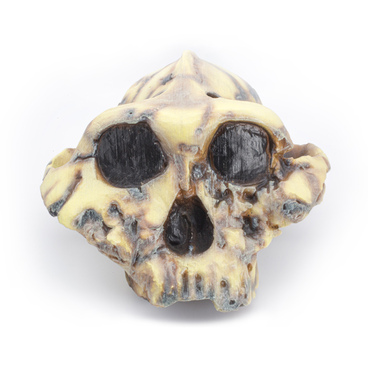The photo shows Alexey Okladnikov, an archaeologist, historian and one of the founders of the Soviet academic archeology. His findings changed the scientific understanding of the areas where prehistoric people lived. One of Okladnikov’s main discoveries is the ancient burial of a child in the Teshik-Tash cave. This find showed that Neanderthal tribes lived in Asia. Based on this data, scientists managed to understand better the ancient history of mankind.
Okladnikov was born in Konstantinovka village, in Irkutsk region, in 1908. His father was a teacher and died early, when the future archaeologist was only 12 years old. Alexey Okladnikov was fascinated with the local history since childhood and was engaged in a local history club at school. In 1925, he entered Irkutsk State University, and a year later published his first article — “Neolithic sites on the Upper Lena” (“Lena” is the name of a river).
As a student, Okladnikov went on his first scientific expedition along the Lena River. Local residents told him that they had seen drawings carved on the rocks nearby. The archaeologist decided to check the information and found the Shishkin petroglyphs. Traveler and historian Gerard Miller had mentioned these drawings before in the 18th century, but that time his findings did not interest scientists. Okladnikov was working at “pisanitsa” (neolithic rupestrian drawings) for ten years, was studying drawings and published two fundamental monographs based on the results.
In 1928, Okladnikov became an employee of the Irkutsk Museum of Local Lore, and then he was invited to a graduate school in Leningrad. He worked and lived there for more than 20 years and constantly flew to the excavations in Siberia. He spent a lot of time especially in the valley of the Angara River, where he was studying ancient monuments before they were destroyed during the hydropower station’s construction.
In 1961, Okladnikov moved to Novosibirsk and there under his direction the Institute of History, Philology and Philosophy of the Siberian Branch of the USSR Academy of Sciences was established. The archaeologist balanced his administrative and scientific work and expeditions. He continually went on excavations in different regions of Eastern Siberia, made many important archaeological discoveries and published 70 monographs and more than 1000 articles. Scientist Alexey Okladnikov played an important role in the formation of humanitarian academic sciences in the east of the country and influenced the development of the entire national archeology.
Okladnikov was born in Konstantinovka village, in Irkutsk region, in 1908. His father was a teacher and died early, when the future archaeologist was only 12 years old. Alexey Okladnikov was fascinated with the local history since childhood and was engaged in a local history club at school. In 1925, he entered Irkutsk State University, and a year later published his first article — “Neolithic sites on the Upper Lena” (“Lena” is the name of a river).
As a student, Okladnikov went on his first scientific expedition along the Lena River. Local residents told him that they had seen drawings carved on the rocks nearby. The archaeologist decided to check the information and found the Shishkin petroglyphs. Traveler and historian Gerard Miller had mentioned these drawings before in the 18th century, but that time his findings did not interest scientists. Okladnikov was working at “pisanitsa” (neolithic rupestrian drawings) for ten years, was studying drawings and published two fundamental monographs based on the results.
In 1928, Okladnikov became an employee of the Irkutsk Museum of Local Lore, and then he was invited to a graduate school in Leningrad. He worked and lived there for more than 20 years and constantly flew to the excavations in Siberia. He spent a lot of time especially in the valley of the Angara River, where he was studying ancient monuments before they were destroyed during the hydropower station’s construction.
In 1961, Okladnikov moved to Novosibirsk and there under his direction the Institute of History, Philology and Philosophy of the Siberian Branch of the USSR Academy of Sciences was established. The archaeologist balanced his administrative and scientific work and expeditions. He continually went on excavations in different regions of Eastern Siberia, made many important archaeological discoveries and published 70 monographs and more than 1000 articles. Scientist Alexey Okladnikov played an important role in the formation of humanitarian academic sciences in the east of the country and influenced the development of the entire national archeology.



